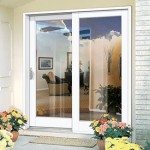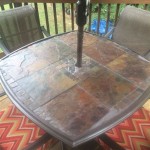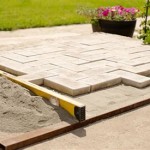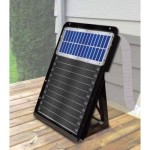Understanding Standard Patio Umbrella Pole Size
The patio umbrella is a ubiquitous fixture in outdoor living spaces, offering shade and protection from the elements. A crucial, yet often overlooked, aspect of selecting the right patio umbrella is understanding the standard pole size. The pole’s dimensions significantly affect stability, compatibility with bases and tables, and overall aesthetic appeal. This article provides a comprehensive overview of standard patio umbrella pole sizes, exploring the factors that influence these dimensions and their implications for umbrella selection and use.
The term "standard" suggests a degree of uniformity, but in reality, patio umbrella pole sizes can vary. These variations are dictated by several factors, including the umbrella’s overall size (canopy diameter), its intended use (residential or commercial), and the materials used in its construction. While precise measurements can differ slightly between manufacturers, there are common ranges that can be considered "standard" for various applications.
The diameter of the pole is the most frequently discussed dimension. This measurement determines the compatibility of the umbrella with a base or patio table umbrella hole. A pole that is too wide will not fit, and one that is too narrow can lead to instability and potential damage. Height is another important consideration, as it affects the amount of shade provided and the overall visual balance of the outdoor space. Finally, the pole's material composition (aluminum, steel, wood, etc.) influences its strength and durability, indirectly affecting the optimal pole size.
Standard Diameter Measurements
The diameter of a standard patio umbrella pole typically falls within a range of 1.5 inches (38 mm) to 2 inches (51 mm). However, variations exist. The prevalence of a specific diameter often depends on the type and size of the umbrella.
For smaller residential patio umbrellas, particularly those with canopies ranging from 6 to 7 feet in diameter, a pole diameter of 1.5 inches (38 mm) is common. This size provides adequate support for the smaller canopy without being excessively bulky. Umbrellas with this pole size are typically designed to be used with lighter-weight bases or inserted into patio tables with standard umbrella holes.
The most common diameter for residential patio umbrellas, especially those with canopies ranging from 7.5 to 9 feet in diameter, is 1.5 inches (38 mm). This diameter presents a good balance between strength and compatibility. It is wide enough to provide sufficient support for a moderately sized canopy while still fitting comfortably in most standard patio table umbrella holes and umbrella bases.
Larger residential umbrellas and many commercial-grade umbrellas often feature poles with a diameter of 1.75 inches (44 mm) or 2 inches (51 mm). These larger diameters provide increased stability and strength, which is necessary to support larger canopies, often exceeding 9 feet in diameter. Umbrellas with these wider poles require heavier bases to prevent tipping, particularly in windy conditions. These are less likely to be directly inserted in tables, and when they are, specialized tables with wider holes are needed.
Beyond these general ranges, some specialty umbrellas may have non-standard pole diameters. For example, cantilever or offset umbrellas, which have the pole positioned to the side of the canopy, often require thicker and stronger poles to support the offset weight. These poles can exceed 2 inches in diameter. Similarly, market umbrellas designed for commercial use in restaurants and cafes may also have non-standard pole sizes to withstand the rigors of daily use.
When purchasing a patio umbrella, it is crucial to verify the pole diameter to ensure compatibility with the intended base or patio table. Measuring the inside diameter of the umbrella base or table hole is a simple way to determine the appropriate pole size. If the umbrella is intended for use with an existing base, it is advisable to bring the base to the store or compare measurements online before making a purchase.
Considerations for Pole Height
The height of a patio umbrella pole is as important as its diameter, influencing the amount of shade provided and the overall aesthetics of the outdoor space. Standard patio umbrella pole heights typically range from 7 to 9 feet, but this can vary depending on the style and intended use of the umbrella.
For most residential patio umbrellas, a height of 7.5 to 8 feet is common. This height provides adequate clearance for most patio furniture and allows for comfortable movement around the umbrella. It ensures that the canopy is positioned high enough to provide ample shade without being so high that it becomes unstable in windy conditions.
Taller umbrellas, with heights approaching 9 feet or more, are often used in commercial settings or for larger residential patios. These taller umbrellas provide a wider area of shade, which can be beneficial for covering larger tables or seating areas. They can also create a more dramatic visual impact, enhancing the overall aesthetic of the outdoor space. However, taller umbrellas require heavier bases to maintain stability, and they may be more susceptible to wind damage.
In addition to overall height, the adjustability of the pole is also a factor. Some patio umbrellas feature telescoping poles or tilt mechanisms that allow the user to adjust the height and angle of the canopy. This adjustability can be particularly useful for maximizing shade coverage as the sun moves across the sky or for adapting to changing wind conditions. These features can add to the cost and complexity of the umbrella, but they can also significantly enhance its functionality and user experience.
The height of the pole should be considered in relation to the height of the surrounding furniture and landscaping. An umbrella that is too short may not provide adequate shade, while an umbrella that is too tall can overwhelm the space and detract from its overall aesthetic. It is important to choose a height that complements the existing outdoor environment and meets the specific shading needs of the user.
Furthermore, the height of the pole can affect the ease of opening and closing the umbrella. Taller umbrellas may require a crank mechanism or pulley system to make it easier to raise and lower the canopy. These mechanisms can add to the cost of the umbrella, but they can also make it more convenient to use, especially for individuals with limited strength or mobility.
Material Impact on Pole Size
The material composition of a patio umbrella pole directly influences its strength, durability, and overall size. Common materials include aluminum, steel, wood, and fiberglass, each with its own set of advantages and disadvantages. The choice of material affects the required pole diameter and height to achieve the desired level of stability and performance.
Aluminum is a popular choice for patio umbrella poles due to its lightweight nature, resistance to rust, and relatively low cost. Aluminum poles are typically hollow to further reduce weight, making them easy to move and handle. However, aluminum is not as strong as steel, so aluminum poles may require a larger diameter to provide the same level of support, especially for larger canopies. High-quality aluminum alloys can improve strength, but they also increase the cost of the umbrella.
Steel is a stronger and more durable material than aluminum, making it a good choice for commercial-grade patio umbrellas or those intended for use in windy environments. Steel poles are typically heavier than aluminum poles, which can make them more difficult to move. However, the increased weight also provides greater stability. Steel poles are susceptible to rust, so they must be properly coated or treated to prevent corrosion. Stainless steel is a more expensive option that offers excellent rust resistance.
Wooden patio umbrella poles offer a classic and elegant aesthetic that can complement a variety of outdoor décor styles. Wood is a strong and durable material, but it is also susceptible to rot and insect damage if not properly maintained. Wooden poles typically require regular sealing or staining to protect them from the elements. The diameter and height of a wooden pole will depend on the type of wood used and the size of the umbrella. Hardwoods, such as teak and mahogany, are more durable and can support larger canopies.
Fiberglass is a relatively new material for patio umbrella poles, offering a good balance of strength, durability, and lightweight. Fiberglass poles are resistant to rust, corrosion, and UV damage, making them a good choice for coastal areas or other harsh environments. Fiberglass is also flexible, which allows it to bend in the wind without breaking. This flexibility can help to reduce the risk of damage to the canopy and the pole itself. However, fiberglass poles can be more expensive than aluminum or steel poles.
The material of the pole also influences its aesthetic appeal. Aluminum poles are typically available in a variety of colors and finishes, while steel poles are often powder-coated to provide a durable and attractive finish. Wooden poles offer a natural wood grain that can be stained or painted to match the surrounding décor. The choice of material should be based on a combination of factors, including the desired level of strength, durability, aesthetic appeal, and budget.
Ultimately, understanding the standard pole size for patio umbrellas requires a holistic view encompassing diameter, height, and material composition. Each element contributes to the umbrella's overall performance, stability, and longevity. Careful consideration of these factors allows consumers to make informed choices that align with their specific needs and preferences, ensuring years of comfortable and stylish outdoor enjoyment.

Patio Umbrella Size Guide Midtownumbrellas Com

The Ultimate Patio Umbrella Buyers Guide

Patio Umbrella Size Guide Midtownumbrellas Com

Patio Umbrella Guide Buy With Confidence Now

How To Measure A Patio Umbrella Specialist

Patio Umbrella Guide Buy With Confidence Now

Hampton Bay 9 Ft Aluminum Round Market Outdoor Patio Umbrella In Aloe Uca171098 Al The Home Depot

10 Ft L X 6 5 W Rectangular Patio Umbrella Market With Push On Tilt Aluminum Pole In Blue H2sa05ot018 The Home Depot

Angeles Home 15 Ft Extra Large Steel Pole Double Side Market Patio Umbrella In Tan Mop 870755cf The Depot

Patio Umbrella Size Guide Midtownumbrellas Com
Related Posts








